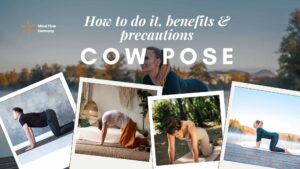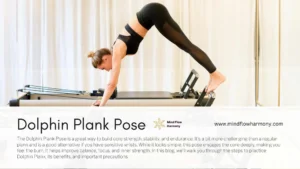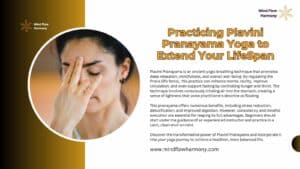Today, yoga is practised all around the world due to its overall health benefits. Your body becomes stronger and more flexible with yoga practice. As you can see, a lot of celebrities and actresses practise yoga to stay flexible, and Apanasana is one of those yoga practices.
The body receives life from prana through respiration and other means. Apana, on the other hand, is the eliminative power of the body. The respiratory and excretory systems allow it to travel downward to exit the body, clearing it of toxins. By releasing the pressure from the process of elimination, performing Apanasana assists the body in effectively reducing and expelling stress, toxins, and waste.
What is Apanasana?
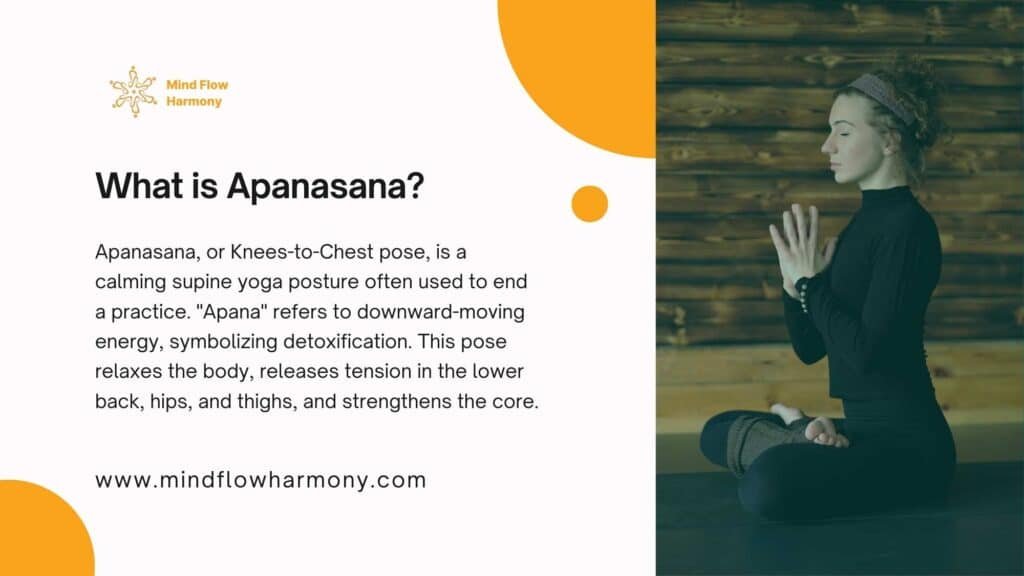
The calming supine pose, known as apanasana, is frequently done to conclude a yoga practice. It is also known as the Knees-to-chest pose. Apana means “downward-moving life force” in Sanskrit, whereas asana is the word for “pose” or “posture.” This pose, as its name suggests, may aid in the movement of toxins through the body and out of it.
According to experts, doing this pose regularly greatly relaxes the body, mind, and spirit. This pose helps release tension in the thighs, hips, and lower back. It tones the muscles of the abdominal wall and eases back tightness.
Apanasana: Method of Working
For those who are new to yoga, this pose is very beneficial because it offers more advantages than just bodily relaxation. Because of its straightforward, peaceful, and relaxing qualities, it is frequently done after back-stretching poses. Apanasana is in a wind-releasing yoga position because of its ability to eliminate pollutants. In the Vata Dosha body, Apanasana facilitates bowel movement, which releases excess Apan Vayu. This is why the name “pawanmuktasana” (gas release yoga position) is also applied to Apanasana.
Benefits of doing Apanasana
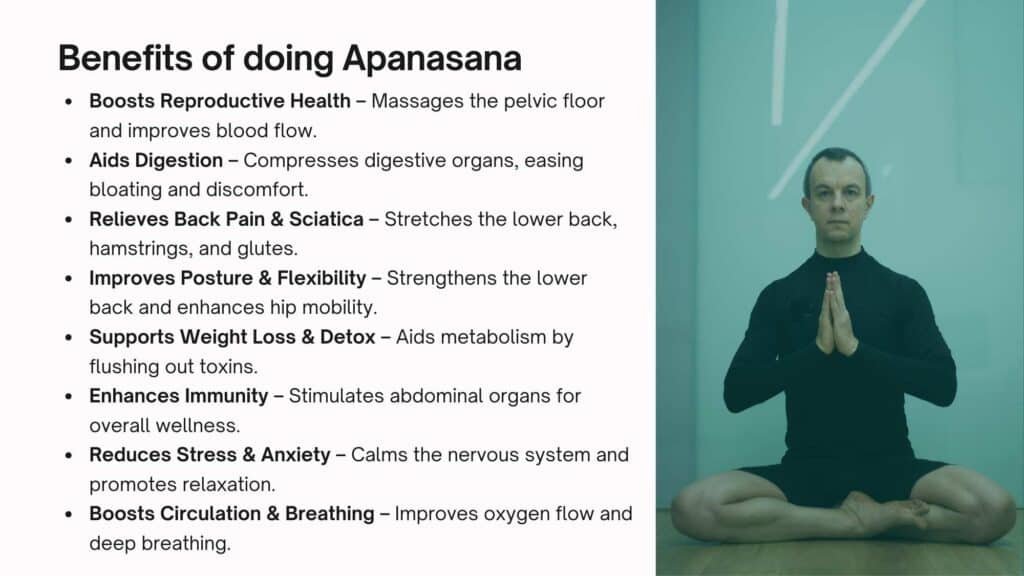
Revitalises the genital system:
The muscles of the pelvic floor are massaged in addition to the abdomen. It presses against the inner thighs and stretches the groynes. Knees-to-chest position enhances the blood flow to the reproductive organs and causes the production of stress hormones in these areas. It offers a better reproductive system.
Stimulates the digestive system:
Apanasana’s effects extend to maintaining the strength of the digestive system. Regular practice facilitates proper digestive system function by gently compressing the internal organs and massaging the digestive organs.
It helps with sciatica and back pain:
Long periods of sitting can cause tightness in the lower back, which this moderate flow can help alleviate. By carefully extending the hamstrings and glutes, it relieves the lower back muscles. The psoas muscles are kept relaxed and pain-free by the contraction and extension of the muscles in the upper thigh and lower abdomen. Therefore, it’s a good idea to avoid sciatica and back pain.
Position and Alignment:
The posture of the body is improved by lower body toning, lower back strengthening, and hip stability. The process of bringing the knees up to the chest tones the glutes while also slightly opening the hip joints. This improves flexibility, mostly in the lower body.
Reduces body weight:
By removing the body’s harmful materials, this yoga pose purifies the body. Thus, by performing this pose, you will be able to reduce your weight.
Aids in immune system support:
Apanasana’s twisting and squeezing of the abdominal organs supports general wellness and immune system stimulation.
Yoga for stress relief:
Apanasana is a calming yoga pose that calms the nervous system and the spine, which in turn calms the body and mind. It relieves tension as a result.
How do I carry out Apanasana yoga?
- Your spine should be in a neutral posture when you first lie on your back.
- The right knee should be bent towards the chest. Just below the knee, interlace your fingers on the shin.
- Extend your left leg straight, and bend your left foot in the direction of your knee.
- To create space between the hip and the femur, feel the left heel pulling away from the left hip socket.
- Hug your right knee in the direction of your armpit (or your chest’s centre).
- Your shoulders and neck should be relaxed. Pull with your biceps instead.
- As your shoulders spread apart in front of your chest, feel them pull away from your ears.
- Feel the ground pressing against your lower back. Make sure there is space between all of the rear vertebrae of your lower spine.
- Feel your tummy press up against your thigh with every breath.
- Feel the belly move away from the thigh with each exhalation.
- To make your shoulders equally broad on both the front and back of your body, visualise your shoulder blades moving apart.
- As your shoulder blades descend your back, feel your lower trapezius muscles contract.
- You look up at the sky with a loving gaze.
- Lengthen your lower back by drawing your pubic bone towards your belly button. Don’t put any weight on your neck, and as little as possible on the back of your head.
- Make sure that every muscle in the extended foot and leg is working and participating. Your bent leg’s foot should be relaxed.
- Feel your inside organs being massaged on the side of your body where your legs are bowed.
- Let go of your hands and bring them to your sides. To completely release the posture, straighten the bowed leg.
Beginner’s Advice:
- If this asana causes you any discomfort, tuck a folded blanket beneath your head or neck.
- If it seems hard to flex your knees all the way, place a cloth between your thigh and calf.
- Since this is a basic-level yoga asana, it should be easy for all skill levels to practise, regardless of experience level.
- However, you should see a doctor or yoga expert right away if you experience any difficulties performing this asana or thereafter.
Apanasana Variation
Knees-to-chest is one variant of Apanasana (Wind Relieving Pose):
Another name for it is Apeksha Nakshatra Asana. To do it, lie on your back and raise both knees to your chest, keeping your arms wrapped around your knees.
Knee-to-chest pose for a deeper leg stretch:
Release one leg and extend it forward, letting the toes point forward until the leg falls peacefully on the floor. This should start from the normal knees to the chest pose. This is where you deepen the stretch by hugging the bent leg closer to your torso and bringing your forehead to the knee. A better and more accurate leg stretch is possible with this option.
Knees-to-chest pose for a deeper leg stretch using a strap:
Halfway through the second step of the Knees to Chest Pose Tutorial, insert the strap, stabilising it between your centre back and the shin of your bowed leg. As in the previously mentioned variation, the second leg stays extended. With your arms passively resting on both sides of your body and your eyes fixed on the ceiling, carefully lay your back on the ground. Unwind and relish the more intense stretch.
Precautions
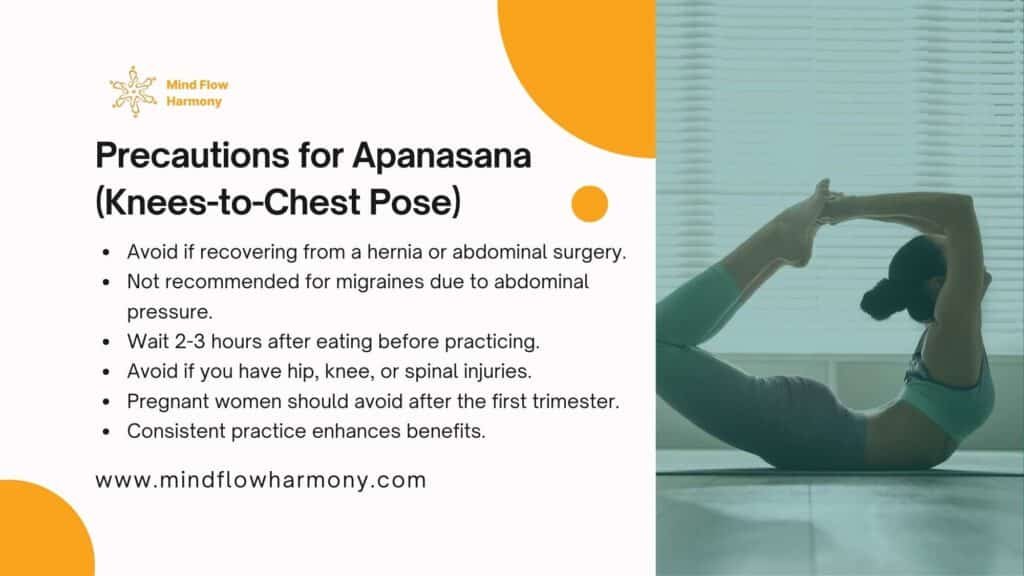
- If you are healing from a hernia or abdominal surgery, avoid doing this yoga position.
- This is not something someone with a bad migraine should attempt, as breathing becomes difficult due to the pressure around the abdomen, which puts pressure on the brain.
- Avoid doing this pose right away after eating; instead, wait at least two to three hours between meals and yoga practice.
- If you suffer from a hip, knee, or spinal ailment, stay out of apanasana yoga pose.
- After the first trimester, pregnant women shouldn’t continue to hold this stance.
- For better results, practise this asana consistently.
Conclusion
An easy supine pose to practise, apanasana involves reclining back with both knees pressed up towards the chest and the legs and feet together. Begin your day by doing apanasana on the floor mat or the mattress of your bed, and you’ll feel renewed all day.


